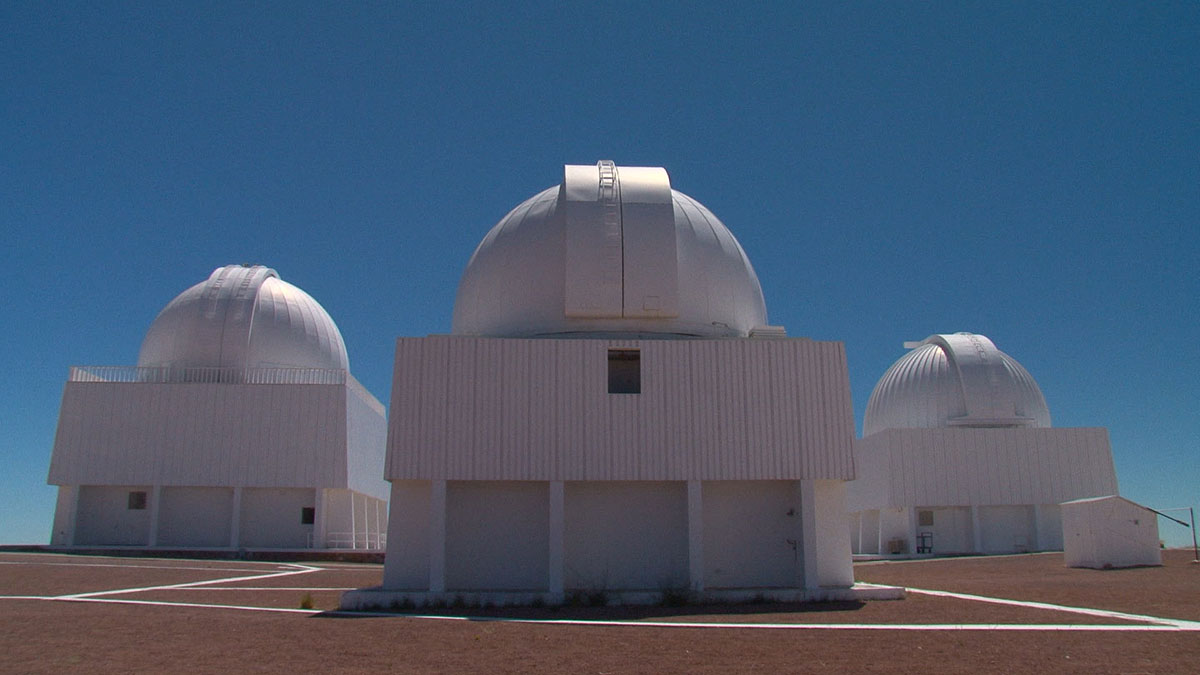By Chlotrudis Independent Film Society
Rating: 4.25 cats
Director: Patricio Guzmán

Original language title: Nostalgia de la luz
Country: chile, france, germany, spain, united_states
Year: 2011
Running time: 90
IMDB: http://www.imdb.com/title/tt1556190/
Jason says: “I don’t think it was Patricio Guzmán’s plan to do a bait-and-switch with his documentary NOSTALGIA FOR THE LIGHT, but if it was, he executes an unusually smooth and effective one here: It’s one thing to start with astronomy and end with mass murder, but pulling the two subjects together so well that the audience will thank you for switching things up is a really neat trick.
“Chile’s Atacama Desert, with its complete lack of humidity, is the best place in the world to observe the southern sky, and as a result astronomers from around the world have been building telescopes there for over a century. The still, dry air and lack of any sort of native life makes the area valuable to many others aside from those looking to the heavens, though: The drawings of Pre-Colombian natives are still clearly visible in many places, and the widows and orphans of those ‘disappeared’ during the Pinochet regime hope that their loved ones’ hidden remains have also been preserved.
“Though the study of far-off stars and human atrocities may seem like completely different subjects, Guzmán links them by pointing out how all human observation is of the past. As astronomer Gaspar Galaz explains, the far-off galaxies he observes are seen as they were millions to billions of years in the past; the sun in the sky is that of eight minutes ago; the moon we see is that of one second ago; even what we feel when touching things has a small delay in reaching our brains. Archeologist Lautaro Núñez expands on this, pointing out how the drawings of ancient peoples may be easily accessible, but it is very difficult to learn about nineteenth-century Chile. Later, it is taken as a given information from mere decades ago has been actively suppressed. Though everybody in Atacama is looking to learn something different, they are all facing variations of the same limits.
“Guzmán constructs the chain from astronomy to Pinochet elegantly, allowing the words of Galaz to naturally lead to Núñez’s observations, while Núñez’s descriptions of a mining camp built in the 1800s quickly lead to how it became one of the Pinochet regime’s concentration camps. The interview subjects themselves are chosen carefully and with apparent purpose – the interviewees at the observatories are primarily young men who are free to look outward, a sharp contrast to the old women who are left to quite literally pick up the pieces of shattered lives. Núñez has the look of an academic, able to discuss facts and theories even though, as a contemporary of the women, he likely has his own personal stories of the dark days. Guzmán is able
to connect well with all of them, conveying their knowledge to non-experts without trying to force fact to fit metaphor, as too many non-scientists are wont to due.
“Guzmán and cinematographer Katell Djian shoot the film nicely as well: A series of images near the start of the film, from a
house apparently unchanged since the 1950s, not only plays into Guzmán’s narration about nostalgia and how his childhood led him to these interests, but hints at the idea of the environment preventing change. Visually, the audience is introduced to Galaz and Núñez in a quite straightforward manner, but the survivors of the bad times come more reluctantly, initially shot from behind, as if still afraid even decades later. And, given the location and subject matter of the film, there are always interesting
things to point the camera at.
“Perhaps the most striking image is one that comes at the end of a series of photographs of the lunar surface, and looks to be another one until a downward pan shows it to be an excavated skull. It wouldn’t have been a bad image to end the film on. The film does keep going for a bit, though, and doesn’t quite match that punch again. In some ways, the interviews with multiple survivors and widows bring interesting stories but not the direct connection from the single representatives of astronomer and archeologists. Questions about Chilean children born with their parents in European exile, while interesting, don’t quite fit in with the thrust of the rest of the film. Guzmán finds himself grasping for a way to connect the calcium lines on stars’ spectrographs with the bones found in the desert toward the end, not quite managing it.
“One imperfect metaphor doesn’t sink an otherwise excellent movie, though, and as someone who did come in for the parts where Guzmán was looking toward the stars, I found all of the ways he looked to the past fascinating. 4+ cats
“Seen 29 January 2012 in the Brattle Theatre [(Some of) The Best of 2011, 35mm]”
